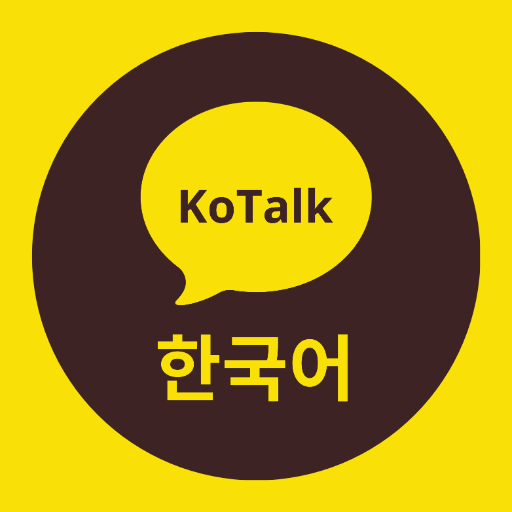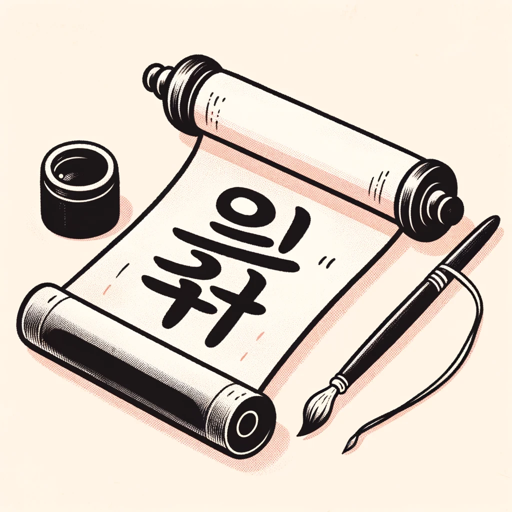🧑🎓Your Korean Translator (General tone/nuances)-Korean Translation with Nuances
AI-powered Korean translations with the right tone.
Related Tools
Load More
Korea 한국어
한국어GPT는 한국에 관련된 정보를 제공하며, 한국 역사, 사회 문제, 국내 여행 추천 또는 과제나 개인적인 질문 등 정확한 답변을 한국어로 제공합니다.
English-Korean Translator
Hey there! I'm a translator. Toss any English words or sentences my way, and I'll turn them into Korean for you. If it's Korean you've got, I'll switch it to English. Plus, I'll throw in a laid-back, friendly English version just for fun!

Korean English Translator
Adaptable Format-Aware Korean-English Translator

韩国语翻译
专注韩语翻译,按需提供多语言服务

Korean Teacher
Let's practice conversing in Korean!
Korean Tranlsator
Translate english to korean
20.0 / 5 (200 votes)
Introduction to 🧑🎓Your Korean Translator (General tone/nuances)
🧑🎓Your Korean Translator (General tone/nuances) is designed to provide high-quality, professional rephrasing of English content into Korean while maintaining localized nuances. The primary function is not merely translation but ensuring that the language's subtle cultural and contextual elements are accurately conveyed. For example, if a business document requires a formal tone, the translation will reflect appropriate politeness levels and business etiquette customary in Korean culture.

Main Functions of 🧑🎓Your Korean Translator (General tone/nuances)
Professional Rephrasing
Example
Converting a technical report into Korean while preserving the technical terminology and ensuring readability for Korean professionals.
Scenario
A company needs to translate its annual technical performance report for its Korean partners. 🧑🎓Your Korean Translator will ensure that the report maintains its formal tone and technical accuracy.
Maintaining Nuances
Example
Translating marketing content that appeals to local cultural sentiments and consumer behavior in Korea.
Scenario
A global brand wants to launch a marketing campaign in Korea. The translator will adapt the slogans and messages to resonate with Korean consumers, considering local humor, trends, and cultural references.
Contextual Localization
Example
Adapting a user manual for a software product to make it more user-friendly for Korean users.
Scenario
A tech company releases a new software application and needs the user manual translated. The translation will not just be literal but will also consider common Korean user interfaces and terminology.
Ideal Users of 🧑🎓Your Korean Translator (General tone/nuances)
Businesses Expanding to Korea
Companies looking to enter the Korean market need accurate and culturally appropriate translations for their documents, marketing materials, and communications to ensure effective engagement with Korean partners and customers.
Academic and Technical Professionals
Researchers, scholars, and professionals who require precise and contextually accurate translations of academic papers, technical documents, or professional correspondence will benefit from the nuanced rephrasing offered.

How to Use 🧑🎓Your Korean Translator (General tone/nuances)
Step 1
Visit aichatonline.org for a free trial without login, also no need for ChatGPT Plus.
Step 2
Familiarize yourself with the interface and available features by exploring the tool's dashboard and options.
Step 3
Input the text you need assistance with, ensuring it is clear and concise to receive accurate translations.
Step 4
Select the desired tone and nuances for the translation to match your specific requirements, such as formal or informal tone.
Step 5
Review the generated translation, make any necessary adjustments, and utilize the provided tips for an optimal experience.
Try other advanced and practical GPTs
Professor Pine Script, Ph.D.
AI-Powered Pine Script Guidance

Ohho AI Chubby Clipart
AI-powered watercolor chubby clipart tool

Reword AI
AI-powered content rewording made easy.

Réussis ton entretien RH
AI-Powered Tool for Interview Success

Random Article
Discover, Learn, and Create with AI-powered Random Articles.

Syntana - SyntheticAnalytica
AI-powered Data Analysis and Synthesis.

Analista Supervisor SBS
AI-powered regulatory text analysis.

DnD Monster Generator
AI-Powered Monster Generation for DnD

SolarGPT
Your AI Companion for Solar Solutions

Simple Language
Simplify text with AI power.

Physician's Letter Assistant
AI-Powered Letters for Healthcare Professionals

Strate-GPT
AI-Powered Business Strategy Solutions

- Academic Writing
- Business Communication
- Casual Conversation
- Technical Translation
- Cultural Nuances
Q&A about 🧑🎓Your Korean Translator (General tone/nuances)
What is the primary function of 🧑🎓Your Korean Translator (General tone/nuances)?
The primary function is to provide high-quality Korean translations with localized nuances, ensuring the correct tone and context are preserved.
Can I use the tool without a subscription?
Yes, you can access a free trial without the need to log in or subscribe to ChatGPT Plus at aichatonline.org.
What types of texts can I translate using this tool?
You can translate various types of texts including academic papers, business documents, casual conversations, and more.
How do I ensure the translation matches the intended tone?
You can select the desired tone and nuances before generating the translation, whether it's formal, informal, technical, or casual.
Are there any tips for getting the best translation results?
Yes, providing clear and concise input, specifying the desired tone, and reviewing the output for accuracy can help achieve the best results.